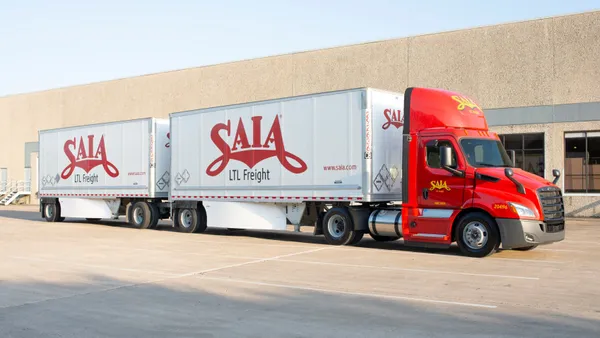Editor's Note: This story is part of a weekly analysis of the logistics industry's latest statistics. See an overview in our data hub.
Dive Brief:
- Mixed monthly carload and intermodal traffic results in August and September did little to stop the Association of American Railroads from celebrating several records amid the start of peak season.
- August 2017 was the best month of intermodal traffic in history, with railroads reporting 1,401,081 containers and trailers (5.6% growth from August 2016), according to the AAR's non-adjusted monthly rail traffic data.
- Meanwhile, the last two weeks of September 2017 set consecutive records for the best weekly intermodal traffic, recording a 5.5% gain compared to the same period last year. However, the spoils were not evenly spread, as carloads declined both in August (0.3%) and September (2.3%) year-over-year.
Dive Insight:
It's a year of records for railroads as intermodal traffic continues its steady ascent, but a look at the graph above (even if it is not yet adjusted) reveals a few more stories have yet to be told.
First, shipments of containers and trailers may have risen to all-time highs during the last two weeks of September, yet the trendline shows the monthly increase was tempered. In other words, the first two weeks of September must have seen a significant decline to balance out the weekly gains.
This, of course, is likely due to the hurricane effect. "Unfortunately, floods, tornadoes, and hurricanes are a fact of life, and railroads have long experience dealing with them and their aftermath," AAR Senior Vice President John T. Gray said in a press release. "For railroads there is no alternative to long hours of very hard work in very difficult conditions, and that's what railroads have been putting in.
It's likely, then, that had it not been for hurricanes Harvey and Irma September traffic could have been even greater. "As our economy and population grow, consumer spending will grow too, and intermodal will continue to be the best way to get many goods to consumers," Gray said in a separate press release.
The second less promising story however continues to be the decline of carload shipments. While a few product categories — such as crushed stone, sand and gravel or primary metal products — saw growth, twelve of the 20 saw declines in September. As Supply Chain Dive has previously reported, railroads have been dealing with this shift since at least the Great Recession, and the market transition does not appear to be slowing anytime soon.















